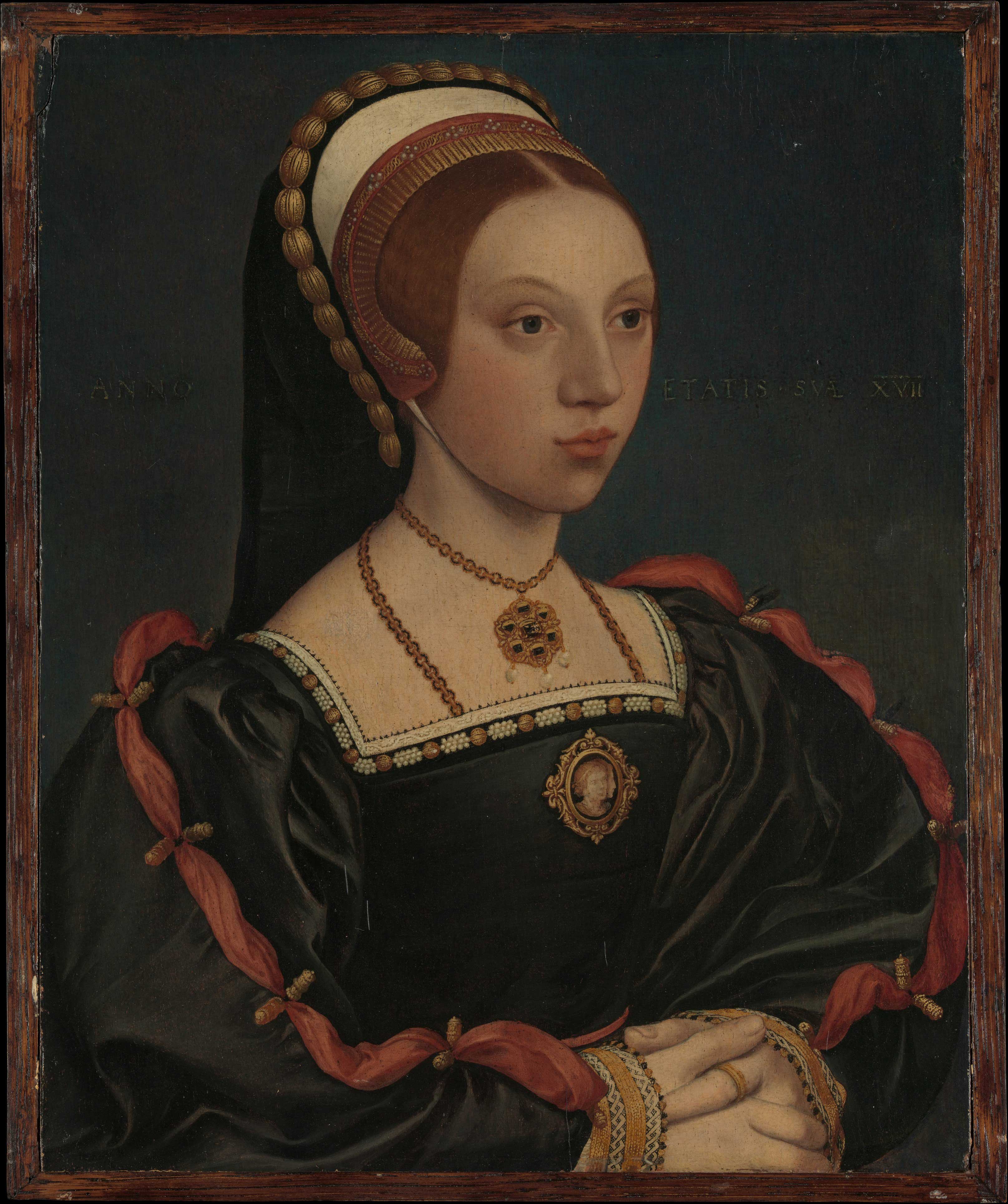December 6
Thank you to Niki Incorvia for writing this article for us today. Catherine Howard is such a fascinating Tudor figure.
Catherine Howard: A Puzzling Dichotomy

There are many different interpretations of Catherine Howard’s character, her demeanour, what she may or may not have said at her execution, but two things remain consistent – she displeased Henry, and he had her executed, and her life was anything but simple.
Perhaps one of the most interesting interpretations of Catherine was written by Karen Lindsay in A Feminist Reinterpretation of the Wives of Henry VIII. Her account of Catherine’s personality falls somewhere in the middle, painting the young Tudor Queen as a modern-day woman. Lindsey (1995) writes, “Sophisticated though we like to think ourselves, we are still stuck in the ancient dichotomy of Madonna and whore. Shaking free of those figures, however, we can see a very different Katheryn Howard, more human, more truly tragic than the various personae historians have allowed her” (p. 168). It seems that only contemporary thinking can explain Catherine and her views on marriage, relationships and who she shared her time with. From a young age, she enjoyed male company, beginning with her music teacher, Henry Manox. As Lindsey (1995) remarks, “Kathryn found in Manox’s attraction to her an opportunity to test her own sexuality” (p. 160), and so started, at this young age, Catherine’s interest in men and their attraction to her.
Soon after Manox, came Francis Dereham, who Lindsey explains was more interested in marriage than Catherine was at the time, though she was willing to pretend they were married while they courted (1995). Again, another instance of perhaps progressive thinking on the part of Catherine. Whether her disinterest in marriage to Dereham was contingent on the fact that she was a Howard and perhaps could reach higher, or because she was young and willing to wait before being betrothed. In January 1540, Henry married Anne of Cleves, and Catherine joined Anne’s household as a lady-in-waiting, “Dereham was shattered by her departure, but Kathryn was too excited to waste much emotion on a lover whose attentions were already growing tedious” (p. 163). This only supports the argument that Catherine viewed herself as a young woman in her prime awaiting the next opportunity.
When Catherine met Henry at his court, she was certainly in her prime, and the contrast to her and his wife at the time, Anne of Cleves, must have been outstanding. Henry did not find the German princess attractive and tried to back out of the marriage upon her arrival. However, according to Lindsey (1995), “Henry was apparently attracted to Kathryn even before Anne arrived….” (p. 163). As with Catherine’s cousin, Anne Boleyn, before her, Catherine’s family encouraged her to “command” the King’s attention. Her efforts were rewards, “By April everyone knew Henry wanted to dump Anne and marry Kathryn” (Lindsey, 1995, p. 164). In the beginning and during their courtship, Catherine did obey Henry, probably because she was blinded by his regal authority. Lindsey (1995) remarks, “Whatever she felt about the king, there is no doubt she enjoyed being queen” (p. 165). Also adding to the narrative that Catherine did what was best for Catherine and made no apologies for trying to advance herself. While she served the king and helped others at courts, she still found ways to meet her own needs as well. Lindsey (1995) writes:
She was queen to the old king, who doted on her. She may even have had some affection for him. But at this point in his life he could hardly have been an appealing lover for a sexually experienced young woman. Someone else might be – someone like Tom Culpeper, one of the gentlemen of Henry’s privy chamber.” (p. 167)
Catherine and Culpeper were loosely related, and they knew each other prior to coming to court. Culpeper had a bit of a checkered past but it appears either Catherine did not fully know about or chose to look beyond his unsavoury activities (Lindsey, 1995). Culpeper provided much pleasure and entertainment to the young and energetic queen. However, just as most things at court do not go unnoticed, her affair with Culpeper was no longer a secret, along with her prior relationships. The beginning of the end for Catherine and Henry would be in November 1541, when Henry was given a letter by Archbishop Thomas Cranmer (Ridgway, 2010). According to Lindsey (1995), “When Henry returned from progress, he was greeted with two pieces of bad news. One was that his sister Margaret had died in Scotland. The other was this his wife had been unchaste before they were married. He bore this loss of his sister stoically, but he wept over the loss of his illusions” (p. 175). The fact that Catherine’s life before her marriage caught up with her was bad enough, but the worst was yet to come. Soon enough she was being questioned about Tom Culpeper. According to Lindsey (1995), “Kathryn admitted to the expensive gifts and the secret meetings, but she denied that she had had a sexual relationship with Culpeper” (p. 176). It was primarily since Catherine had greatly displeased her husband, the king, and deeply bruised his ego that he decided to have his once cherished, young wife executed. Her fall from grace was swift.
On November 14, 1541, Catherine was taken to Syon, where she would remain as a prisoner (Ridgway, 2010). Then, on November 22, 1541, it was announced that Catherine had forfeited the title of Queen, but now should be referred to as simply Catherine Howard. This was in such direct contrast to her life this time the year before where she was the king’s object of affection. Christmastime 1540, Henry enjoyed spending time with “two of his queens” – both Catherine and her predecessor, Anne of Cleves (Ridgway, 2010). According to Ridgway (2016), “After supper all three conversed for a while in the most gracious manner, and when the King retired to his own apartments…” (n.p.). Now, the position Catherine found herself in was quite different from the previous year. On December 10, 1541, Dereham and Culpeper were executed, where their heads were then set on London Bridge.
On February 10, 1542, Catherine Howard was taken to the Tower of London by boat. Then on February 13, 1542, the young former queen was taken to the scaffold for her execution. Even her last moments are up for debate – whether she was tired and weak or stood proud and defied the king by pledging her love for Culpeper. For someone so young at the time of her death, her life and character seemed so complicated and are still up for interpretation. In all likelihood, she was just a young woman following her heart and desires, neither saint nor whore. In some ways, it’s interesting that Catherine can remain a historical mystery, but it would serve a lot of people well to know Catherine’s side of her own story.
Dr. Niki Incorvia fulfilled her doctorate in conflict studies in April 2014 at Nova Southeastern University, concentrating in historic systemic violence and patterns. During that time, Niki used The Anne Boleyn Files as a reliable and consistent resource for her studies. She regularly participated in webinars and contributed book reviews to the website, welcoming any opportunity to learn more about the Tudors. Niki also holds a Bachelor of Arts from the State University of New York at Fredonia in Political Science and a Master of Arts from Long Island University at Brooklyn in Political Science/Urban Studies. She is currently a history and law teacher in Queens, New York.
